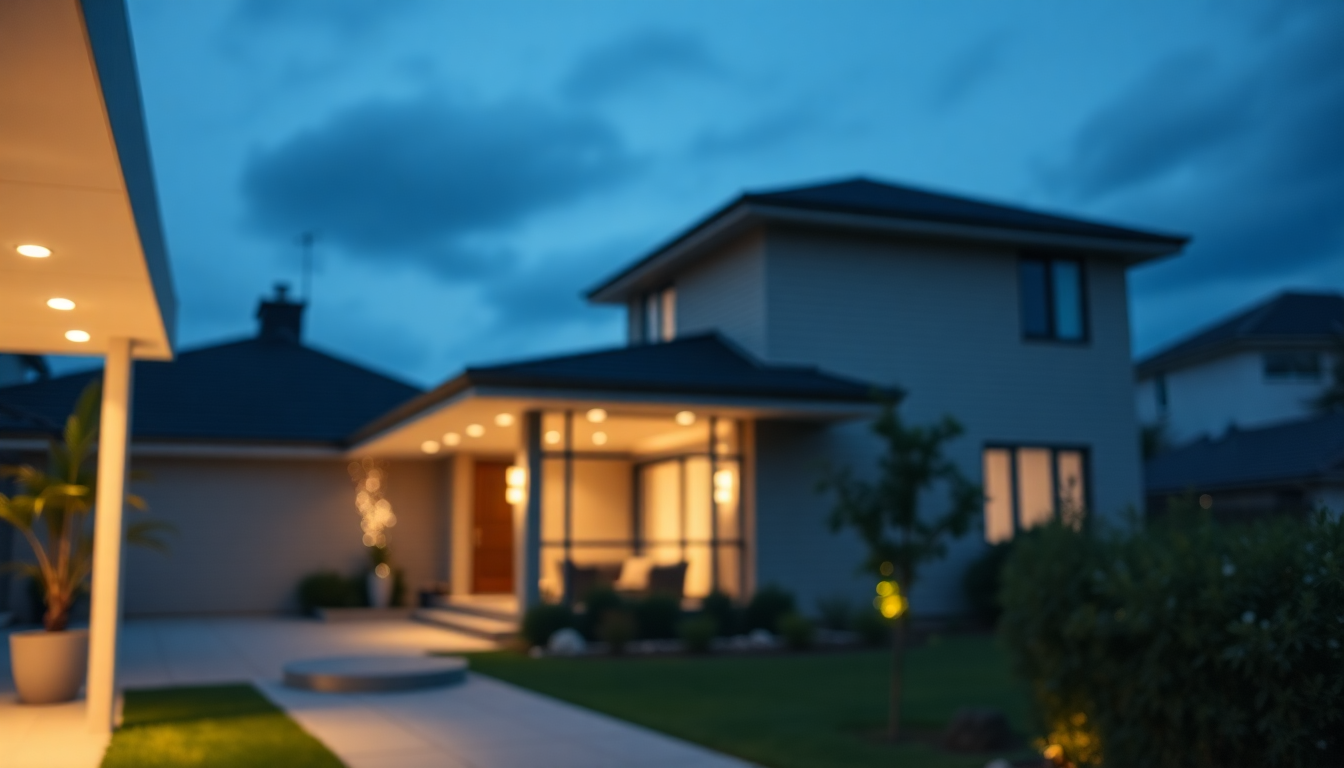Introduction
As technology continues to evolve at an unprecedented rate, the integration of Artificial Intelligence (AI) into smart home systems is fundamentally transforming the way we think about residential safety and convenience. In 2025, AI-enhanced smart night lighting solutions are at the forefront of this revolution, offering homeowners smarter, safer, and more energy-efficient living environments. These innovative systems are not just lighting devices; they are intelligent safety companions that adapt dynamically to residents' habits and environmental conditions, providing a new standard for home security and comfort.
The Evolution of Residential Night Lighting
Historically, night lighting was a simple, manual process involving switches or timers. Basic motion-activated lights appeared to improve convenience but often fell short in providing comprehensive safety or energy savings. Confident that traditional lights could only react post-incident or when manually operated, homeowners faced limitations in ensuring continuous, responsive lighting during nighttime activities or emergencies.
Over time, advancements brought about motion sensors and timers that improved energy efficiency and convenience. However, these solutions still lacked the ability to learn, predict, or adapt to specific household behaviors — a critical flaw in today's fast-paced, connected living environments.
The Rise of AI-Enhanced Smart Night Lighting
By 2025, the market has shifted toward AI-powered systems that leverage cutting-edge technologies such as machine learning, IoT (Internet of Things), and sensor fusion. These systems can analyze vast amounts of environmental data to deliver context-aware lighting, which not only enhances safety but also optimizes energy consumption.
Some of the hallmark features of these systems include:
- Adaptive brightness control based on ambient conditions
- Intelligent motion detection with false alarm reduction
- Learning resident habits and preferences over time
- Real-time integration with security and home automation systems
Core Benefits of AI-Enhanced Smart Night Lighting in 2025
Implementing AI-driven lighting solutions offers a multitude of advantages, transforming the safety and comfort landscape of residential properties:
- Superior Security: Motion sensors combined with AI algorithms can distinguish between residents, pets, and potential intruders, reducing false alarms. Lights automatically activate upon detecting suspicious movement, deterring break-ins and providing better visibility during nighttime.
- Energy Conservation: Unlike traditional lighting, AI systems adjust illumination levels based on real-time needs, decreasing unnecessary energy use, and aiding sustainability goals.
- Customized User Experience: These systems remember individual routines, such as bedtime or wake-up times, providing tailored lighting that enhances daily comfort and convenience.
- Predictive Safety: By analyzing patterns, AI can anticipate potential safety hazards, such as poor visibility or unusual activity, alerting homeowners proactively.
- Seamless Integration: AI night lighting integrates effortlessly with doorbell cameras, security alarms, voice assistants, and other smart devices, creating a holistic safety ecosystem.
How AI-Enhanced Night Lighting Works
The functionality of these intelligent systems relies on a combination of sophisticated hardware and software components:
- Sensors: These detect various environmental parameters such as motion, ambient light levels, temperature, and sometimes sound, providing real-time data inputs.
- AI and Machine Learning Algorithms: Programmed to analyze sensor data, these algorithms identify patterns, differentiate between expected and anomalous activity, and determine the optimal lighting response.
- Connectivity Modules: Wi-Fi, Zigbee, or Z-Wave modules enable communication with other smart devices, cloud services, and user interfaces.
- User Interfaces: Mobile apps, voice commands, or home automation hubs allow residents to customize settings, receive alerts, and control lighting remotely.
The Future of Residential Night Safety in 2025 and Beyond
Looking toward the future, AI-enabled smart lighting solutions will become even more sophisticated, leveraging advances in AI, sensor technology, and connectivity:
- Predictive Analytics: Future systems will analyze long-term data to predict and prevent safety issues before they occur, such as detecting unusual activity trends or environmental hazards.
- Biometric and Personalization Technologies: Integration of biometric sensors could allow lighting preferences based on resident identity, mood, or health status, further enhancing personalized safety.
- Energy Harvesting and Sustainability: Solar-powered or kinetic energy-harvesting lights will reduce environmental impact while maintaining reliable safety illumination.
- Advanced Integration: The convergence of AI with other smart home technologies will result in fully autonomous security systems that coordinate lighting, surveillance, and access controls seamlessly.
Challenges and Considerations
While the benefits are substantial, adopting AI-enhanced lighting also presents challenges:
- Privacy Concerns: The collection and analysis of behavioral data require strict data security measures to protect residents’ privacy.
- Costs and Accessibility: Advanced AI systems may have higher upfront costs, although long-term savings and safety benefits justify the investment.
- Technical Compatibility: Ensuring interoperability among various devices and platforms remains crucial for a seamless user experience.
Conclusion
AI-enhanced smart night lighting is setting a new benchmark for residential safety in 2025. By intelligently responding to environmental cues and resident behaviors, these systems offer unmatched safety, convenience, and energy efficiency. As technology continues to advance, homeowners can look forward to increasingly sophisticated safety ecosystems that not only protect their homes but also enrich their everyday lives. Embracing these innovations today positions homeowners at the vanguard of a smarter, safer, and more sustainable future.




Laisser un commentaire
Tous les commentaires sont modérés avant d'être publiés.
Ce site est protégé par hCaptcha, et la Politique de confidentialité et les Conditions de service de hCaptcha s’appliquent.